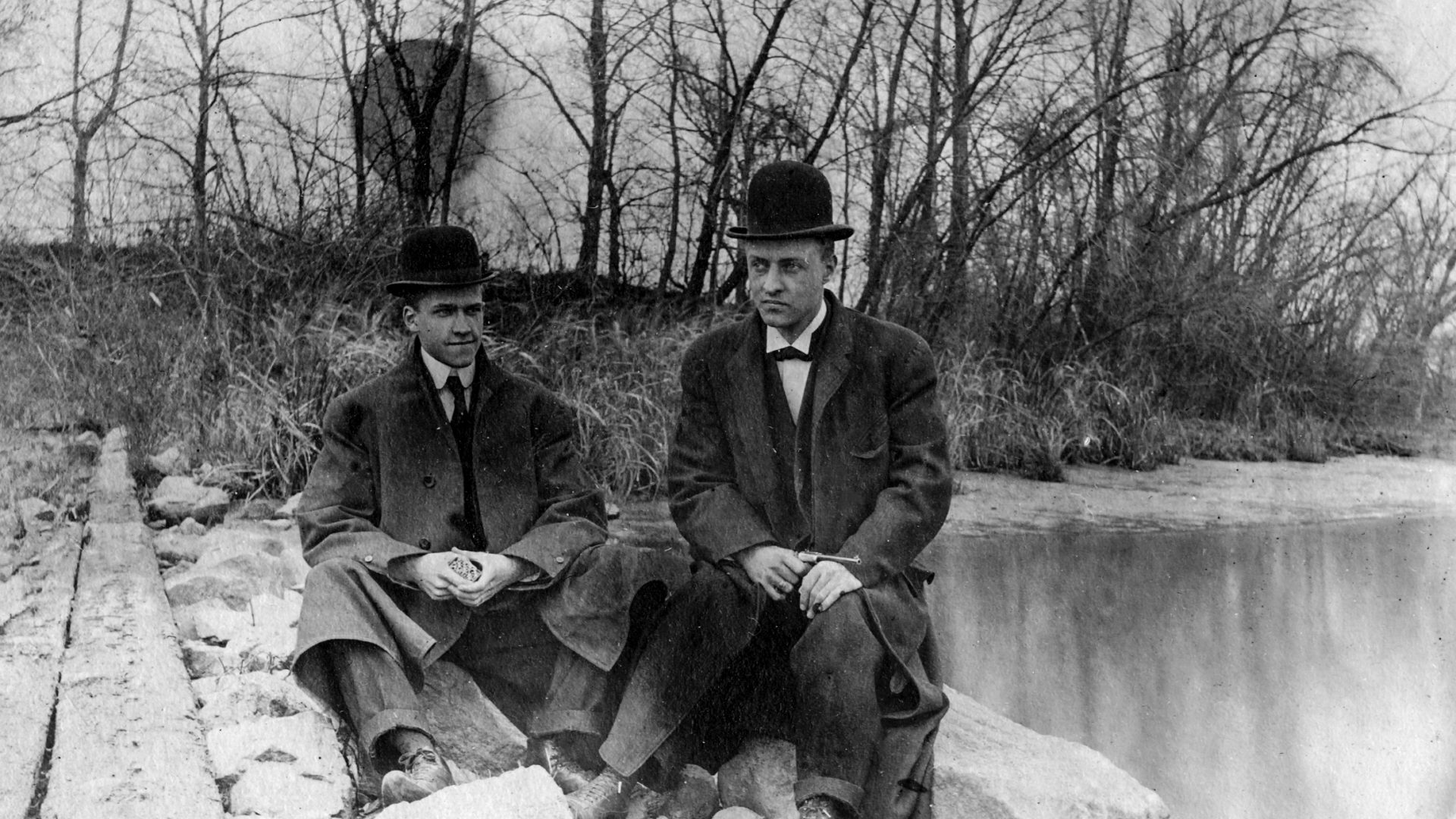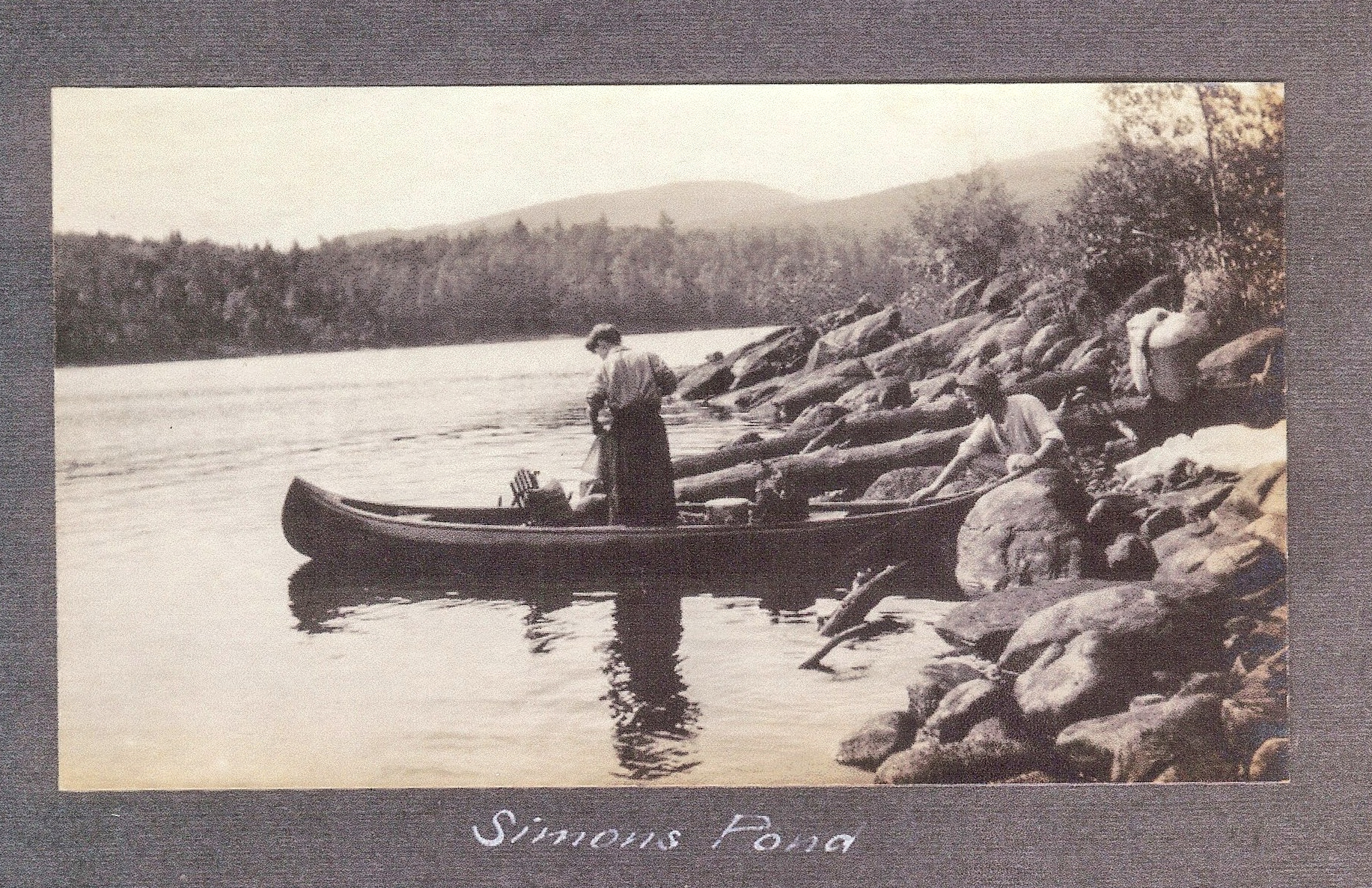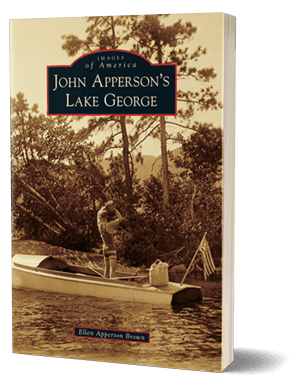Imagine the thrill experienced by a young man accustomed to hiking through the mountains near his home in Southwest Virginia, on getting his first glimpse of Lake George, or of the high peaks in the Adirondacks. John Apperson arrived in Schenectady, New York in 1900, hoping to find employment with the General Electric Company. He did not have a college degree, but he soon found himself immersed in a training program for engineers “on test,” and began forging a successful career in the Power and Mining Engineering Department. His accomplishments at GE were impressive, but he also earned a reputation for being an expert in various forms of Adirondack recreation — taking friends and colleagues along as he organized camping trips and excursions throughout the Adirondack Park, and in the islands of the Narrows, at Lake George.
Who was John Apperson?
Many people have heard his name, but don’t know much about his personality, or of his infectious enthusiasm for introducing others to wild and wonderful places — like the exciting challenges of winter camping on an island, or of climbing mountains on skis, or of learning how to hold a big sail and then skate across a frozen lake. People don’t realize that hundreds of these friends and “associates” became a nucleus of supporters who helped Apperson launch a grassroots campaign to save these wild places from various threats, mainly from logging interests and developers.
What are the Apperson Archives?
This website was created to be an enjoyable way to provide detailed and delightful information about an individual who was at the center of this intellectual and political whirlwind. Apperson was there in Albany listening at the feet of Louis Marshall, during the Constitutional Convention of 1915. While giving a speech to the Adirondack Mountain Club, in 1922, Apperson enthusiastically promoted the club’s first publication, a book about hiking in the high peaks, by Robert and George Marshall. In the summer of 1931, Apperson was already giving talks, publishing pamphlets, and launching an all-out effort to educate the public about the dangers posed by the Hewitt (aka Tree Cutting) Amendment and the Porter – Brereton (aka Closed Cabin) amendment. He was, in fact, the primary force behind a grass roots activism movement. Paul Schaefer heard about Apperson, and sent him a letter, asking if they could meet. By July 15, 1932, Paul Schaefer was climbing Marcy to take documentary photographs of forest fires, and John Apperson had sent him.
Fifteen years later, Schaefer sent a lovely letter to his mentor, expressing “appreciation for your inspiring enthusiasm and artistry in your conservation work.” Here is the letter ( …just one example of the fascinating letters saved in the Apperson archives.):
April 15, 1944 – Paul Schaefer to JSA
Dear Mr. Apperson:
Just a word of appreciation for your inspiring enthusiasm and artistry in your conservation work, as evidenced again Friday night at the meeting of the Adirondack Mountain Club. You are better than you were fifteen years ago when I first met you, and that is saying a lot.
…
The Apperson Archives
Filled with hundreds of historic letters, photographs, publications and more — all of it collected by John Apperson, himself — The Apperson Archives are the digitized and transcribed letters, photographs, and publications documenting of the life of a pioneer in Modern Land Conservation.
So, Who is This John Apperson Anyway?
This website is designed to allow open access for everyone to transcriptions of the letters exchanged, back and forth, between Apperson and a host of key people, as he developed a “preservation lobby.” He created a network of allies and adversaries among fellow engineers and scientists at GE (i.e. Dr. Irving Langmuir & Richmond Moot), state officials (i.e. Warwick Carpenter, William Howard, Jay Taylor, and Robert Moses), wealthy land-owners at Lake George (i.e. Mary Loines, William K. Bixby and George Foster Peabody), officers of large organizations (i.e. Russell M. Carson, John G. Agar, Jim Cawley, Raymond Torrey, and Col. Woodbury), progressive women (i.e. Hilda Loines and Ethel Dreier), and politicians (i.e. Judge Adelbert Moot, Senator Ellwood Rabenold, Gov. Al Smith, and Franklin D. Roosevelt.) He also became the mentor to several younger leaders, passing along to them his methods and strategies (i.e. Paul Schaefer, Vincent Schaefer, Art Newkirk, Ted Dreier, Almy Coggeshall, Phil Ham, and Bill White.)
Together, these friends produced a long list of publications (featuring documentary photographs showing islands being flooded by water, of tree stumps left behind after a logging operation, and of No TRESPASSING signs posted on state islands), and they found kindred spirits among journalists and editors of major newspapers and journals, who eagerly published articles to promote and educate the public about their causes. Together, these ordinary people managed to successfully influence the outcome in two constitutional conventions (1915 and 1938), saving the protections of the “forever wild” clause. Together, they launched two organizations – the New York Forest Preserve Association and the Lake George Protective Association, holding annual meetings in Huddle Bay each summer, to decide on important policy issues. Together, they gathered information and photographs to use as evidence in ongoing litigation concerning the problems with flooding at Lake George (The Lake George Water Trespass Case), and hired Richmond Moot to prosecute their case. And together, they supported Apperson’s efforts to find a permanent solution for Dome Island, eventually donating the island to the Nature Conservancy (in 1956) and raising $20,000 as an endowment to protect the island in perpetuity.
Continue on
…to read a summary of the notable events, people and places that frame John Apperson’s story, followed by an index of his correspondence, in chronological order. Readers can click on specific letters introduced in the index, and then read a complete transcript of each letter. The index also includes brief bios, descriptions of places mentioned, and explanations about notable events. We hope you will enjoy exploring this website, finding out about people who played important roles, and getting a more in-depth understanding of the events, battles and heroics in the Adirondacks that influenced political debate and protected wild places in the forest preserve…
John Apperson’s Life, In Chapters
As an innovative way to introduce everyone to the John Apperson archives, this digital project offers scholars and students a chance to read through typed versions of his correspondence in chronological order. These letters, as well as other documents (speeches, publications, etc.) from his files, serve as a fascinating and vital record of his ideas, activities, friendships, and accomplishments. However, up until now, they have remained fairly well hidden from public view.
Organized in chronological batches, each section will have links to each letter, summary information about the names, places, and organizations mentioned, and links to pamphlets that Apperson himself published as well as articles that Ellen Brown has written (some of them already published in various Adirondack journals,) and slide shows she has presented for talks throughout the Adirondack region.

Early Years in Virginia, Family, and Education
-
1893
John enrolls as a sub freshman at Blacksburg (VPI) where his brother Hull is a graduate student studying electrical engineering.
-
1895
Dr. Apperson was appointed to be Virginia’s Commissioner to the Chicago World’s Fair, but John was having trouble adjusting to life in Marion with his sisters, a stepmother, Elizabeth Black Apperson, and a baby stepbrother, so he wrote his brother Hull to explain.
-
1896
John drops out of Virginia Polytechnic Institute (after barely two years) and finds work with the Marion and Rye Valley Railroad.
-
1896–1898
John works as a surveyor for the MRVRR and becomes foreman over hundreds of workers – all before his twentieth birthday.
-
1899
John and Hull’s whereabouts are unknown, but they may have spent some time in Illinois visiting relatives. Marc Hanna, a cousin, later came to work with John and Hull at GE.
-
1900
Both brothers move to Schenectady, NY. Hull finds a good position in the International Division, and brother John eventually gets accepted into the engineering training program.
-
1901
After getting accepted into the training program, John applied himself to the exciting challenges in engineering, as well as to the completion of correspondence courses in arithmetic.
-
1902–1903
Few documents exist to indicate John’s leisure activities, but early photographs suggest that he made hiking trips into the surrounding countryside, tried out the exotic winter sports, and made a trip to New England. One of the first letters he saved from this time period was from A. Russell Stevenson, a Congregational Pastor, who invited him over for dinner and introduced him to his wife and children.

Making Friends at GE and Beyond
-
1904-1908
Friendship develops between John and a clergyman (A. Russell Stevenson) and his family, and John enjoys interacting with their boys – by making them a toboggan, taking them to the circus, and helping Alex learn how to operate an electric train.
-
1906
John invites his sister, Nancy to pay a visit to Schenectady, and they take a camping trip through the Fulton Chain. They also make a trip to Lake George, where John is already taking an interest in camping and boating in the Narrows.
-
1907
Hull Apperson, who left GE in 1904 and moved to Norfolk, Va., married Duncan Williams from Lynchburg, in 1905. They announced the birth of their daughter, Martha, in 1907.
-
July 1908
John has been promoted within the Power and Mining Engineering Department at GE, with several men working under him.
-
August 20, 1908
Dr. John S. Apperson, John’s father, died, and John went south to attend the funeral, his first time back to Virginia since 1900. John inherits stock in the Staley’s Creek Manganese and Iron Company.
-
September 1908
John hears about a meeting of the Bolton Improvement Association and takes an interest in the efforts of several prominent landowners to preserve the natural areas of Lake George. About the same time he decides to begin riprapping the shores of Dollar Island, recruiting friends from GE to help haul rocks, using boats in summer and sleds in winter.

Exploring the Region
-
Coming Soon
This chapter will be available soon. Sign up for our Newsletter to stay up-to-date on our latest additions to the Apperson Archives.

Becoming an Activist: Asking Questions of State Officials
-
Coming Soon
This chapter will be available soon. Sign up for our Newsletter to stay up-to-date on our latest additions to the Apperson Archives.

Getting Serious About Recreation
-
Coming Soon
This chapter will be available soon. Sign up for our Newsletter to stay up-to-date on our latest additions to the Apperson Archives.

Becoming a Political Activist
-
Coming Soon
This chapter will be available soon. Sign up for our Newsletter to stay up-to-date on our latest additions to the Apperson Archives.

Finding Allies in all the Right Places
-
Coming Soon
This chapter will be available soon. Sign up for our Newsletter to stay up-to-date on our latest additions to the Apperson Archives.

Purchasing Land and Hosting a Regatta
-
Coming Soon
This chapter will be available soon. Sign up for our Newsletter to stay up-to-date on our latest additions to the Apperson Archives.

Dream of a Lake George Park
-
Coming Soon
This chapter will be available soon. Sign up for our Newsletter to stay up-to-date on our latest additions to the Apperson Archives.

Finding Friends and Allies at Lake George
-
Coming Soon
This chapter will be available soon. Sign up for our Newsletter to stay up-to-date on our latest additions to the Apperson Archives.

First – Tongue Mountain… Next – Paradise Bay
-
Coming Soon
This chapter will be available soon. Sign up for our Newsletter to stay up-to-date on our latest additions to the Apperson Archives.

Confronting State Officials: 1929 (January-March)
-
Coming Soon
This chapter will be available soon. Sign up for our Newsletter to stay up-to-date on our latest additions to the Apperson Archives.

Confronting State Officials: 1929 (April-July)
-
Coming Soon
This chapter will be available soon. Sign up for our Newsletter to stay up-to-date on our latest additions to the Apperson Archives.

Confronting State Officials: 1929 (August-December)
-
Coming Soon
This chapter will be available soon. Sign up for our Newsletter to stay up-to-date on our latest additions to the Apperson Archives.

1930 (January-June)
-
Coming Soon
This chapter will be available soon. Sign up for our Newsletter to stay up-to-date on our latest additions to the Apperson Archives.

1930 (July-December)
-
Coming Soon
This chapter will be available soon. Sign up for our Newsletter to stay up-to-date on our latest additions to the Apperson Archives.

1931 (January-March)
-
Coming Soon
This chapter will be available soon. Sign up for our Newsletter to stay up-to-date on our latest additions to the Apperson Archives.

1931 (April-July)
-
Coming Soon
This chapter will be available soon. Sign up for our Newsletter to stay up-to-date on our latest additions to the Apperson Archives.

1931 (August-December)
-
Coming Soon
This chapter will be available soon. Sign up for our Newsletter to stay up-to-date on our latest additions to the Apperson Archives.

1932-
-
Coming Soon
This chapter will be available soon. Sign up for our Newsletter to stay up-to-date on our latest additions to the Apperson Archives.
